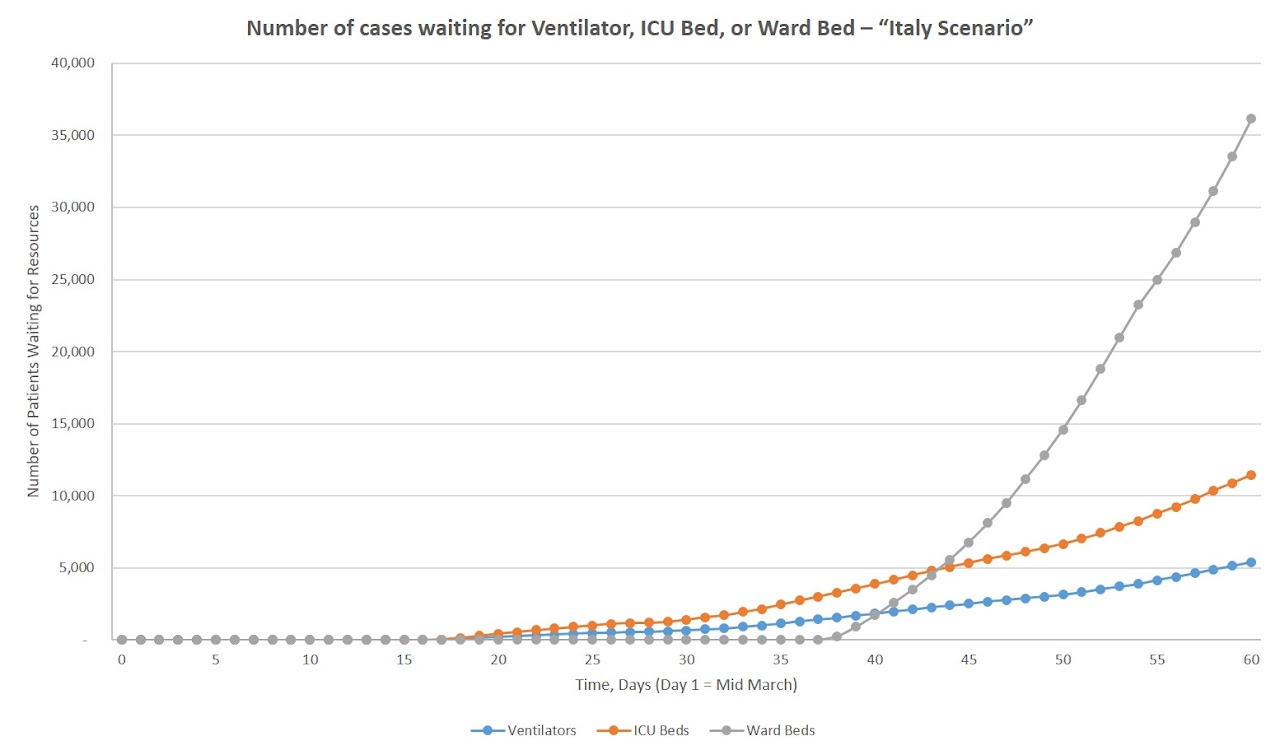COVID-19 Modeling Collaborative
University of Toronto – University Health Network – Sunnybrook Hospital
We are a group of scientists and clinicians working on simulating healthcare resource utilization for COVID-19 and identify capacity constraints to support planning.
Because this is ongoing work, we will post findings here as soon as possible and update regularly (i.e., blog-style).
All working documents (reports, figures) can be found here: Downloads
COVID-19: PREDICTING HEALTHCARE RESOURCE NEEDS IN ONTARIO
Results are simulated using the CORE (COVID-19 Resource Estimator) Model 1.8
NOTE: This is a preliminary model based on evolving data. The model continues to undergo testing and further development. All findings should be interpreted with caution.

MARCH 16, 2021: Updated Projections of COVID-19 in ICU and variants of concern (VOC) by the level of care in ON.
Key points:
- Ontario appears to be on track to have 4,000 new cases of COVID-19 per day and 600 in ICU by early April.
- Although cases and deaths among LTC are decreasing the number of new cases in the community and VOCs are increasing.
- Level-3 Medical/Surgical ICU capacity remains strained in many regions
- The majority of cases admitted to ICU are those aged 40-79 years
The full report “Predictions_COVID19MC_2021.03.16” and results for all simulationscan be downloadedhere:Downloads

FEBRUARY 12, 2021: Updated Projections of COVID-19 in ICU, and analysis of COVID-19 cases stratified by age.
Key points:
- Level 3 Medical-Surgical ICU occupancy has improved, but some regions still strained
- The predicted number of cases in ICU begins to climb towards the end of March in all scenarios
- The majority of cases admitted to ICU are those aged 40-79 years and the majority of deaths outside of LTC are among those aged >60 years
The full report “Predictions_COVID19MC_2021.02.12” and results for all simulationscan be downloadedhere:Downloads
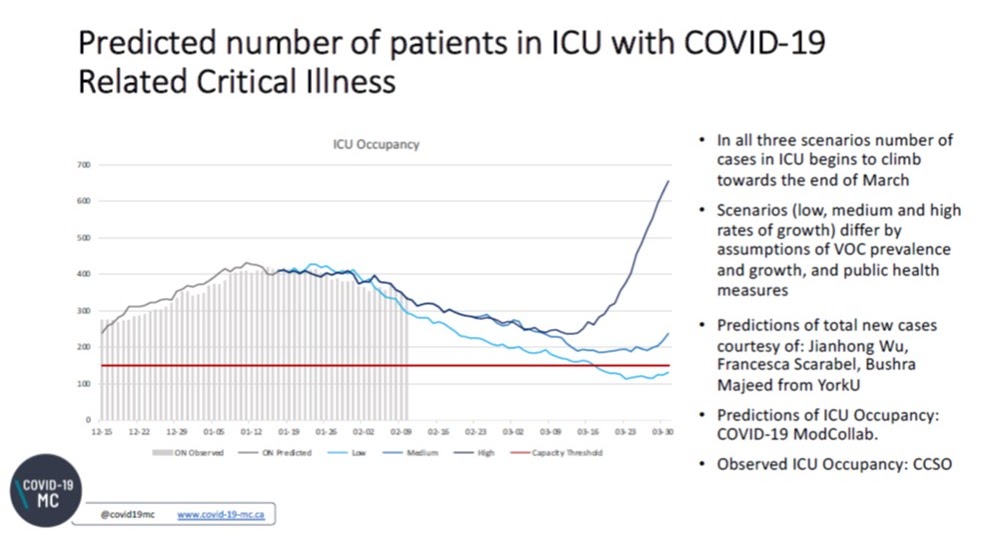
JANUARY 12, 2021: Predicted Acute Care Resource Needs and Current Strain on Critical Care Capacity
Key points:
- The number of new cases of COVID-19 continues to grow despite implementation of province wide lockdown measures on December 26, 2020.
- Continued growth in new cases will put considerable strain on the province’s critical care resources.
- Most Ontario hospitals have little remaining capacity in their level 3 medical surgical ICUs, and these strained hospitals are clustered in the regions with the highest burden of COVID-19.
The full report “COVID_MC_ICU_Predictions_2021.01.12” and results for all simulationscan be downloadedhere:Downloads

DECEMBER 21, 2020: Predicting the impact of “Hard Lockdowns”: 4-6 week “Hard Lockdown” can substantially reduce case counts
Key Updates:
- 4–6 week “Hard Lockdown” (i.e., Dec 28 to end of Jan/mid Feb) can substantially reduce case counts.
- Lower case counts will reduce pressure on acute care system but occupancy levels will remain high into February (delayed indicator).
- Decrease in case count predicted with transmission model (based on contact rates during 1st wave lockdown) is not as steep as in simple predictions (based on decrease in case counts in Victoria and France). Highlighting that “Hard Lockdown” needs to be stringent to see similar decline as Victoria and France.
- “Hard Lockdown” of < 4 weeks unlikely to be sufficient.
The full report “COVID19MC_Update_LockdownPredictions_2020.12.21” and results for all simulationscan be downloadedhere:Downloads

NOV 26, 2020 – ICU Occupancy Predicted to >200 by End of December in all Scenarios
Key Updates:
- Updated simulations exploring scenarios of potential hospital and ICU occupancy: Potential ON Trajectories Based on Recent Growth and Experience in Peer Jurisdictions
The full report “COVID19MC_ICUOccupancyPredictions_2020.11.26” and results for all simulationscan be downloadedhere:Downloads
NOV 12, 2020 – ICU Occupancy Predicted to >150 by End of November in all Scenarios
Key Updates:
- Updated simulations exploring scenarios of potential hospital and ICU occupancy: Potential ON Trajectories Based on Recent Growth and Experience in Peer Jurisdictions
- Healthcare Resource Utilization over Time: Hospitalizations, and length of stay
The full report “COVID19MC_ICUOccupancyPredictions_2020.11.12” and results for all simulationscan be downloadedhere:Downloads


NOVEMBER 5, 2020 – Updated Predictions
Key Updates:
- Updated simulations exploring scenarios of potential hospital and ICU occupancy: Based on observed case trajectory in ON, and possibly reduced restrictions, and observations in European countries (Belgium, Netherlands, Germany, UK, France), cases will likely increase and meet 100/100k threshold by late Nov/early Dec.
The full report “COVID19MC_ICUOccupancyPredictions_2020.11.04” and results for all simulationscan be downloadedhere:Downloads
SEPT 28, 2020 – Predicting Hospital Resource Use in Ontario For a Potential Second Wave
Key Updates:
- We simulated four different epidemic case scenarios using CORE 1.8 for a potential second wave: (1) Ontario (1st wave), Canada; (2) Michigan, USA; (3) Victoria state, Australia; (4) Italy starting on Sept 20, 2020 to December 18, 2020 (90 days) starting with a 7-day average of 300 cases.
- We also simulate three different infection severity levels: low, average, high. These correspond to the demographics of infected individuals with low severity representing mostly a younger population, high severity representing a scenario where high-risk populations are pre-dominantly infected, and average severity representing something in between (e.g., a mix of younger healthy and elder, high-risk individuals being infected).
The full report “CORE1.8_PREDICTIONS_SEPT28” and results for all simulationscan be downloadedhere:Downloads
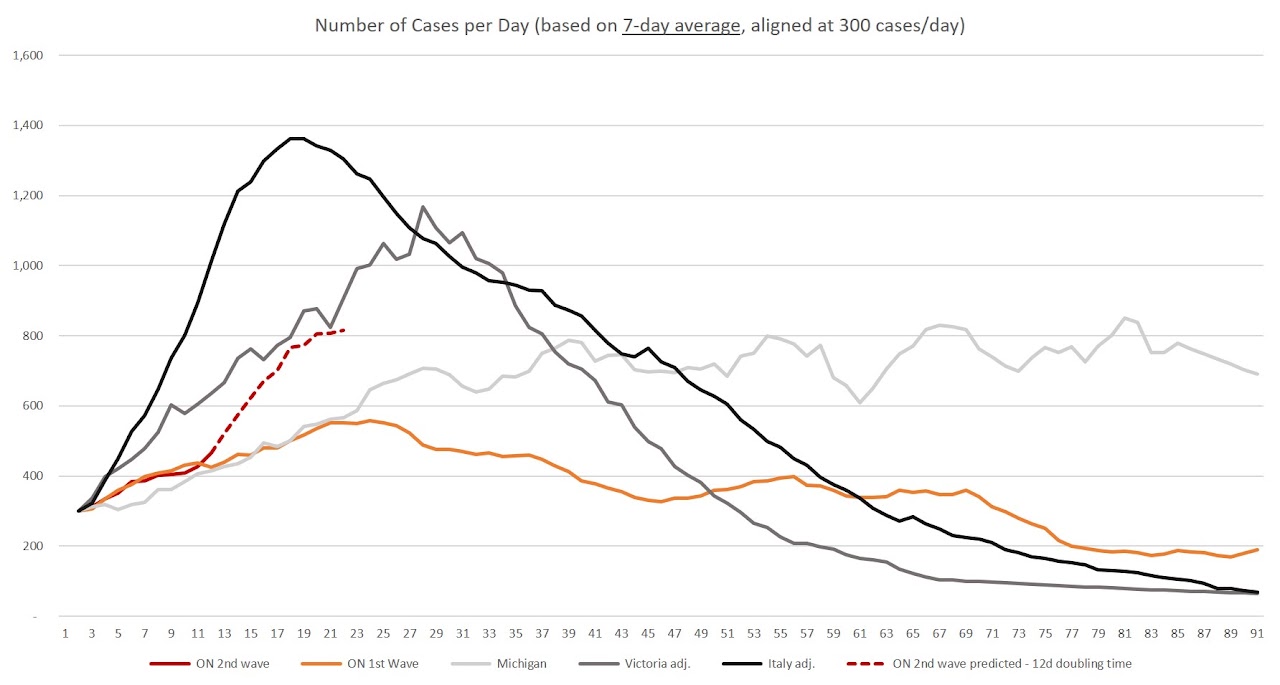
Figure 3. Daily number of cases for epidemic scenarios for Ontario’s potential second wave aligned at 300 cases/day (90 days). Ontario 2nd wave predicted curve based on doubling time of 10 days for 7-day average (for Ontario’s second wave Sep. 18 corresponds to day 1). This curve is added for comparison as a snapshot in time on Sep. 24, i.e., where are we now, but not modeled.
SEPT 04, 2020 – Predicting Hospital Resource Use in Ontario For a Potential Second Wave
Key Updates:
- The CORE model has been updated to version 1.8 to reflect the patient pathways more accurately in Ontario’s acute care systems and to incorporate updated hospitalization, admissions, length of stay (LOS), and mortality data
- After updating the model structure, we calibrated our model to daily ICU and ward occupancy data from Ontario administrative datasets (Daily Bed Census) between June 15 and August 18, 2020
- We simulated four different scenarios using CORE 1.8 for a potential second wave: (1) Ontario (1st wave), Canada; (2) Michigan, USA; (3) Victoria state, Australia; (4) Italy
The full report “CORE1.8_PREDICTIONS” and results for all simulations can be downloaded here: Downloads
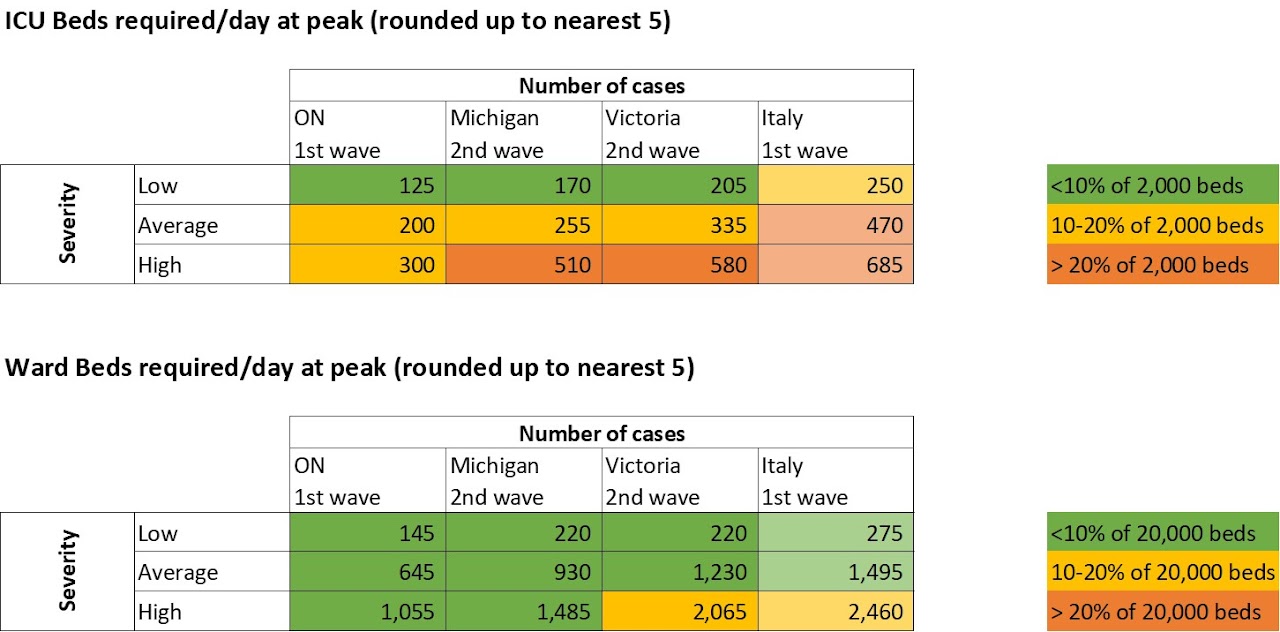
August 22, 2020 – Estimating healthcare resource needs for COVID-19 patients in Nigeria
Manuscript released in pre-print: https://www.medrxiv.org/content/10.1101/2020.08.19.20178434v1
Key Messages: Current hospital resources are inadequate to manage the COVID-19 pandemic in Nigeria. Given Nigeria’s limited resources, it is imperative to increase healthcare resources and maintain aggressive public health measures to reduce COVID-19 transmission
April 28, 2020 – Predicting Consequences of Curtailing Outpatient Scheduled Cardiac Procedures in the Face of COVID-19 Healthcare Resource Needs in Ontario
Key Messages:
- There is a rapid growth in incremental cardiac waitlists as a result of the slowdown in activity in preparation for the resource needs for the COVID-19 pandemic. For certain procedure such as TAVI and EP procedures, there was already a large open waitlist prior to the COVID-19 pandemic and the reduction in cardiac procedures during the pandemic has further exacerbated this growing waitlist
- When the first wave of the pandemic diminishes, we will need to determine the point at which foregoing procedures for cardiac patients, in order to make those resources available to treat COVID-19 patients, translates to a higher number of deaths among cardiac patients
Results and methods in the new report “Cardiac Resources_Apr 28” here: Downloads
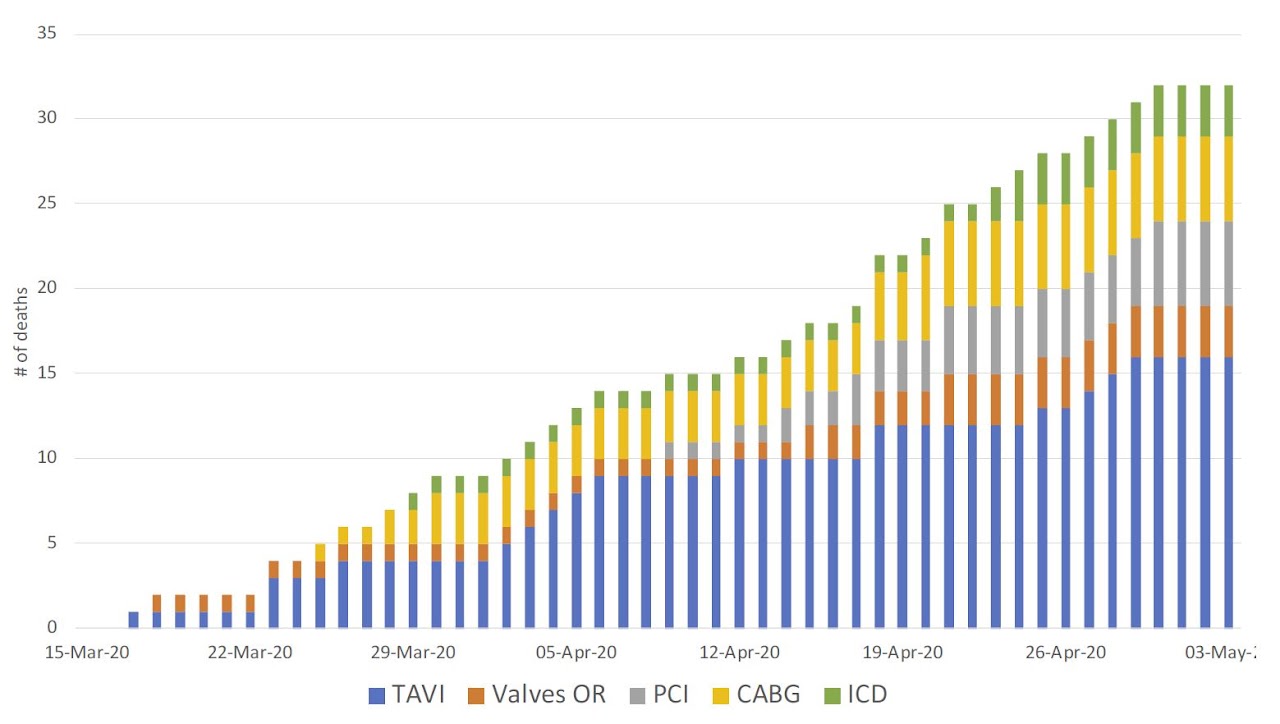
April 17, 2020 – Estimated demand for personal protective equipment (PPE) for Ontario long-term care homes during the COVID-19 pandemic
Key Message: Both incremental and routine PPE demand during the COVID-19 pandemic is substantial for Ontario long-term care homes, and current provincial stockpiles may be insufficient to meet demand over the next 30 days. This has the potential to impact the safety of point-of-care health care workers, the sustainability of the workforce, and overall health outcomes for long-term care residents during the COVID-19 pandemic.
Results and methods in the new report “PPE LTC Phase 1 report (April 16) FINAL_NoAppendix” here: Downloads
Table 2a: Total predicted PPE requirements (incremental and routine care requirements) for Ontario LTC homes during the COVID-19 pandemic (April 15-May 14, 2020
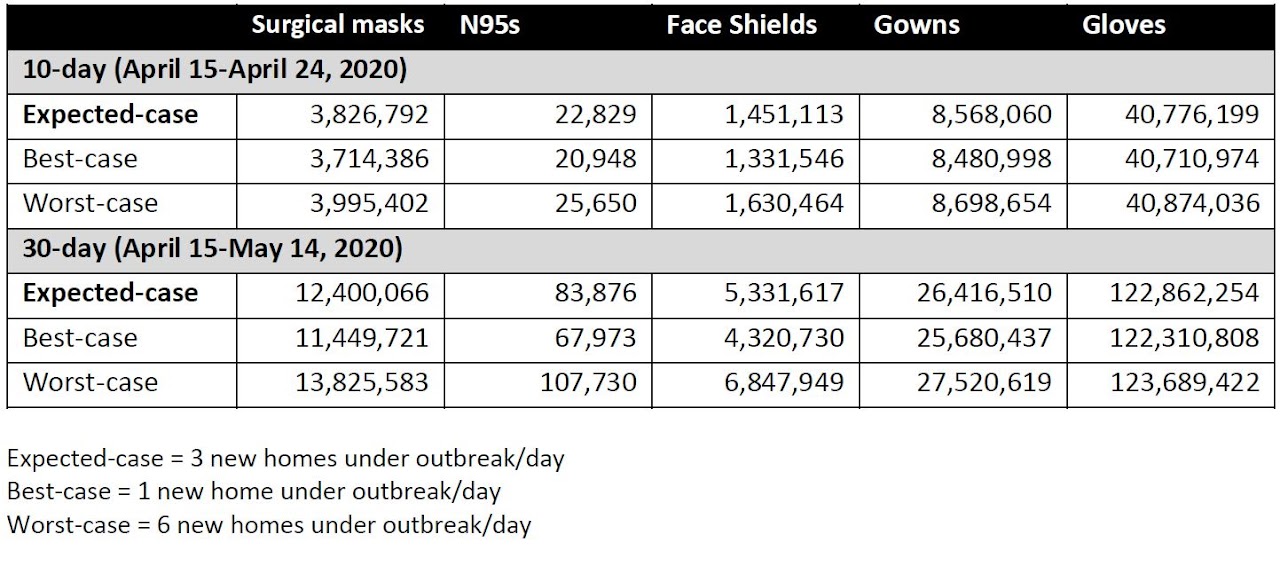
April 08, 2020 – Estimated demand for personal protective equipment (PPE) for Ontario acute care hospitals during the COVID-19 pandemic
Key Message: PPE demand is substantial and current stockpiles may be insufficient to meet demand over the next 30 days, potentially impacting the safety of healthcare workers, the sustainability of the workforce, and overall health outcomes for acute care patients during the COVID-19 pandemic.
Results and methods in the new report “PPE Predictions_Apr 8” here: Downloads
Table 2: Total PPE requirements for the Ontario acute care setting for suspected and confirmed COVID-19 patients (April 6-May 6, 2020)

April 05, 2020 – Updates
As April 3, 2020, some edits (fixed mis-labelled axis in some figures). Updated Figure 3.
The updated report “Hospital Resource Prediction_Apr 5 UPDATE” here: Downloads
Figure 3: Case Predictions Summary March 17 – April 13, 2020

April 03, 2020 – Updates
Key Message: There is continued uncertainty in the epidemiology of COVID-19 (i.e., predicting number of cases is challenging). However, in both, our “Expected” (ON Predicted) and “Italy” scenarios, we may need to further increase capacity compared to the number of resources currently available.
What has changed?
- The epidemiological curves (case scenarios) have been updated with more observed data for Italy and South Korea, predictions for Ontario are based on reported data
- Updated hospitalization data based on Canadian/ON experience
- Added assumption that patients hospitalized in ward do not deteriorate and require ICU
Our new report “Hospital Resource Prediction_Apr 3” here: Downloads
March 26, 2020 – Interactive Model (ShinyApp) and Updates
An interactive model using ShinyApp (beta version) is now available on our website for anyone interested in trying new parameters to answer any questions. It can be accessed here: Interactive Model
This ShinyApp was developed in collaboration with David Rios, Anna Heath, and Petros Pechlivanoglou.
What has changed?
- Minor bugs in the model were fixed, and all Figures have been updated in the report and are summarized below
Our updated report “Hospital Resource Prediction_Mar 26 UPDATE” and figures here: Downloads

Figure 1 – Italy Scenario (Patients Needing Admission)
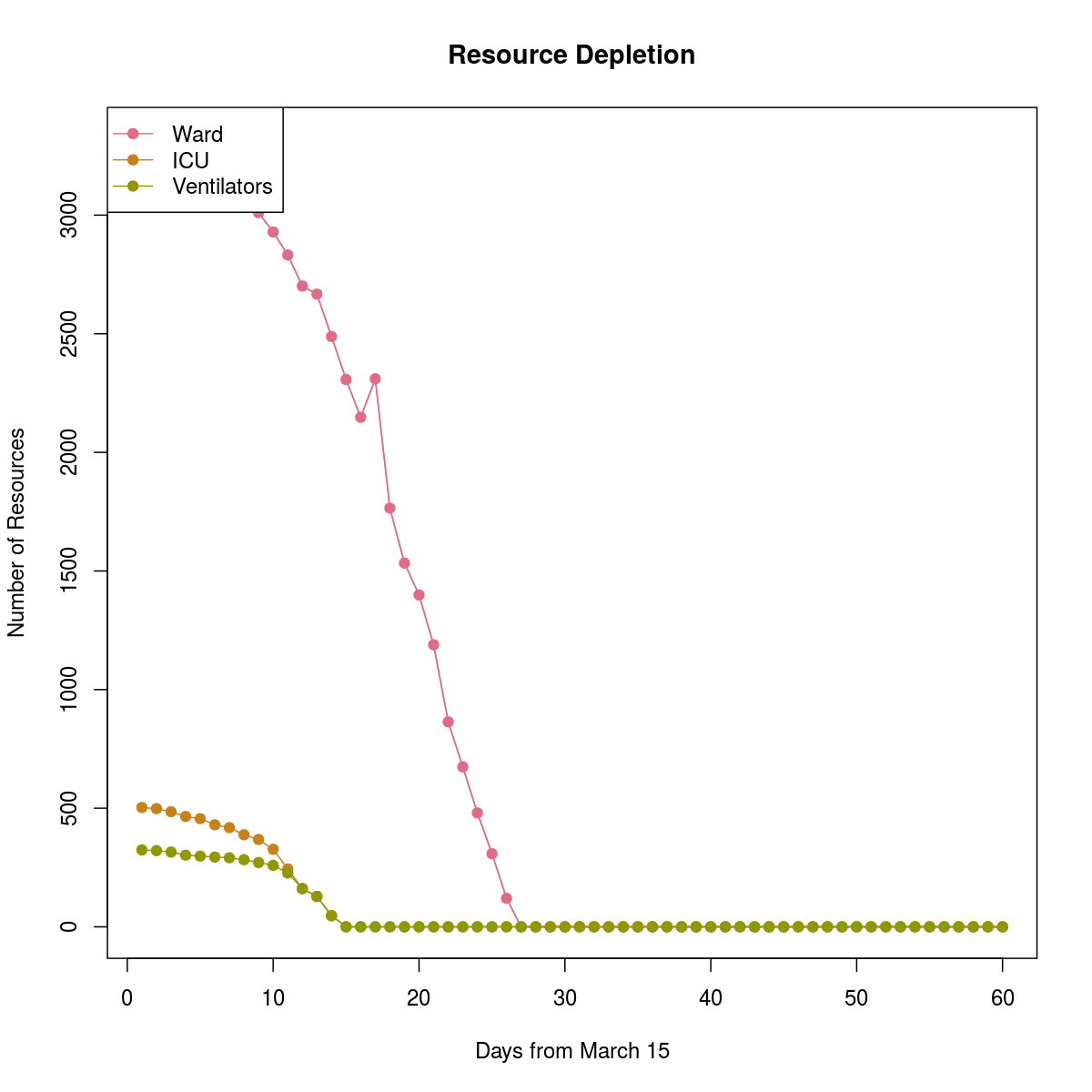
Figure 2 – Italy (Days Until Resource Depletion)
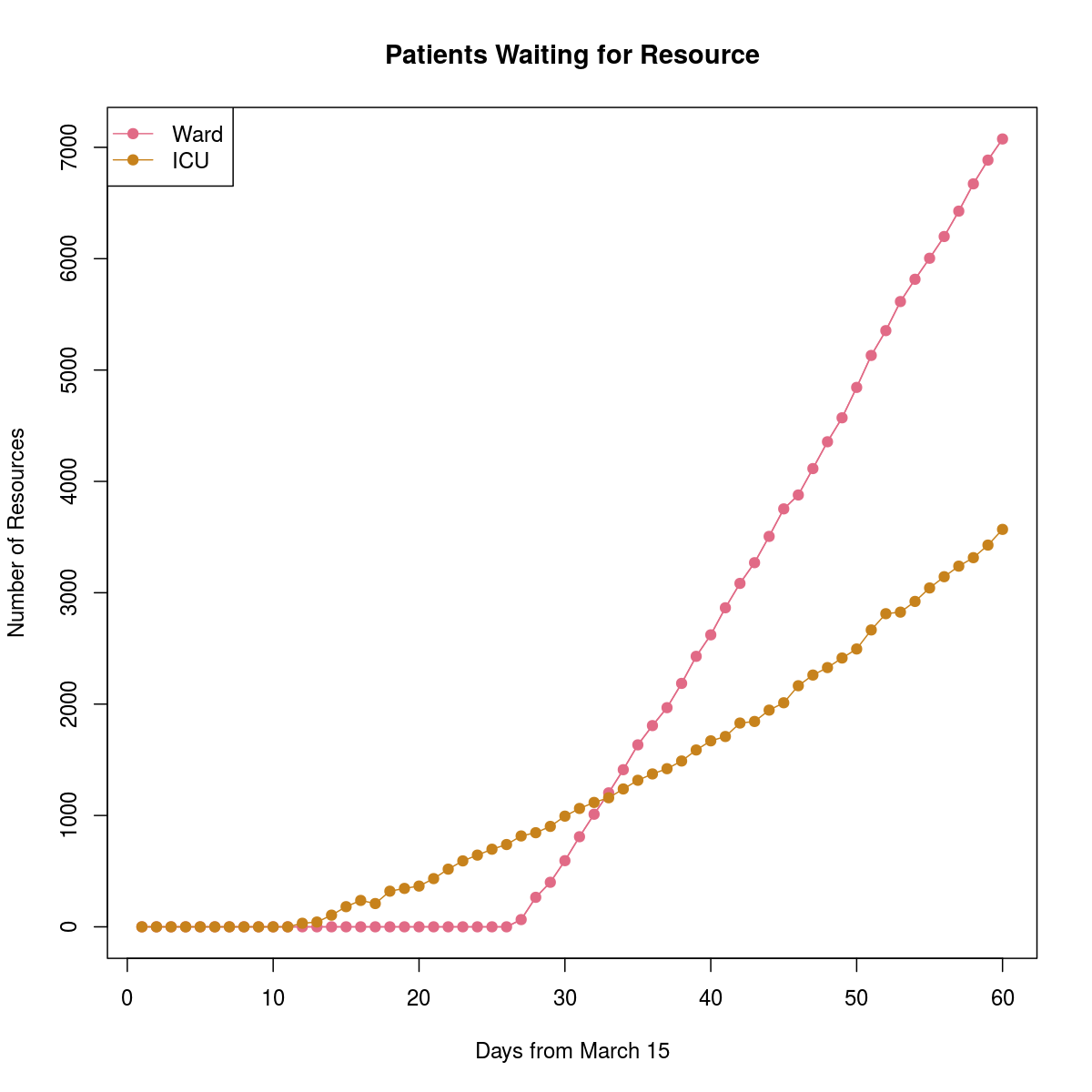
Figure 3 – Italy (Patients Waiting for Resources)
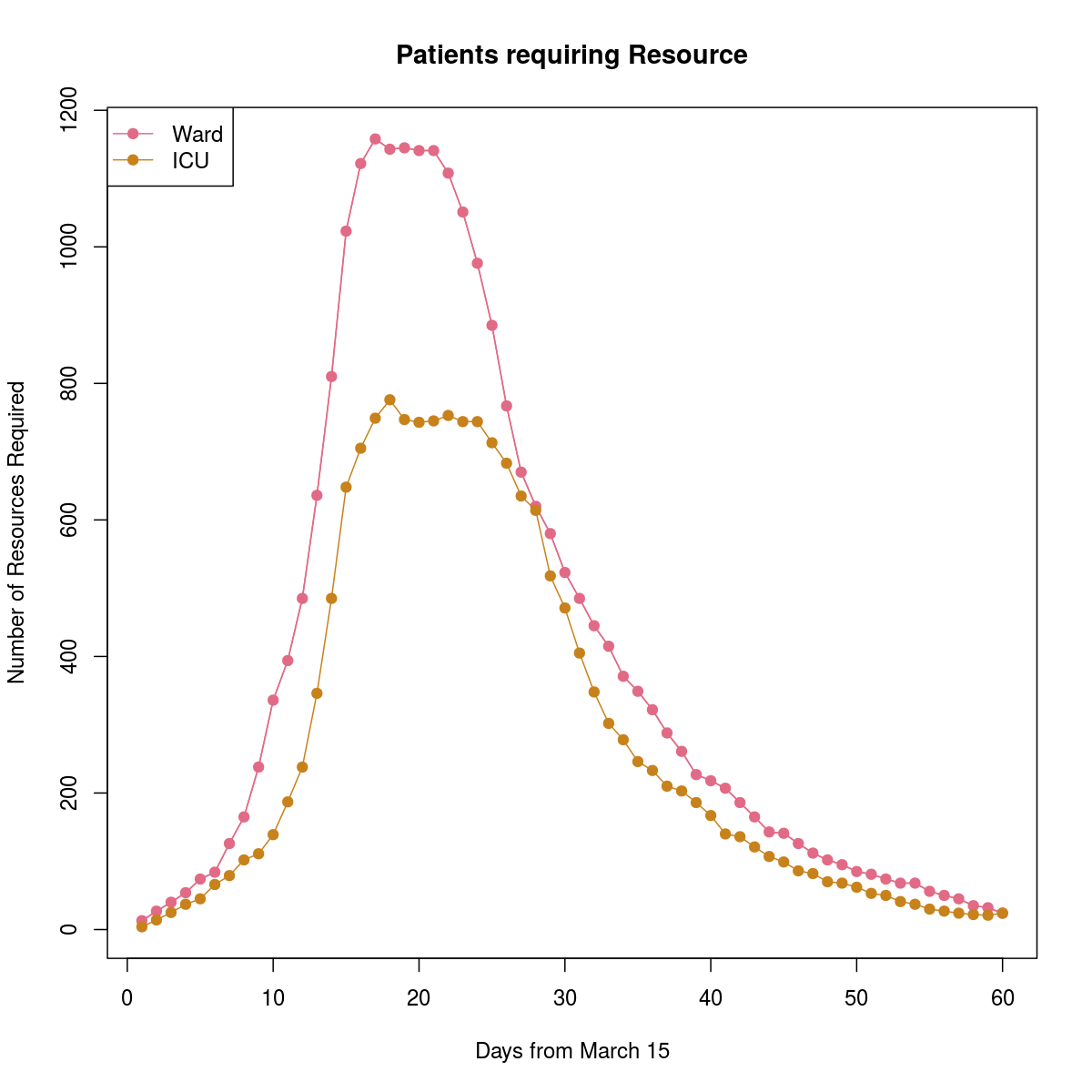
Figure 4 – 25% Scenario (Patients Needing Admission)
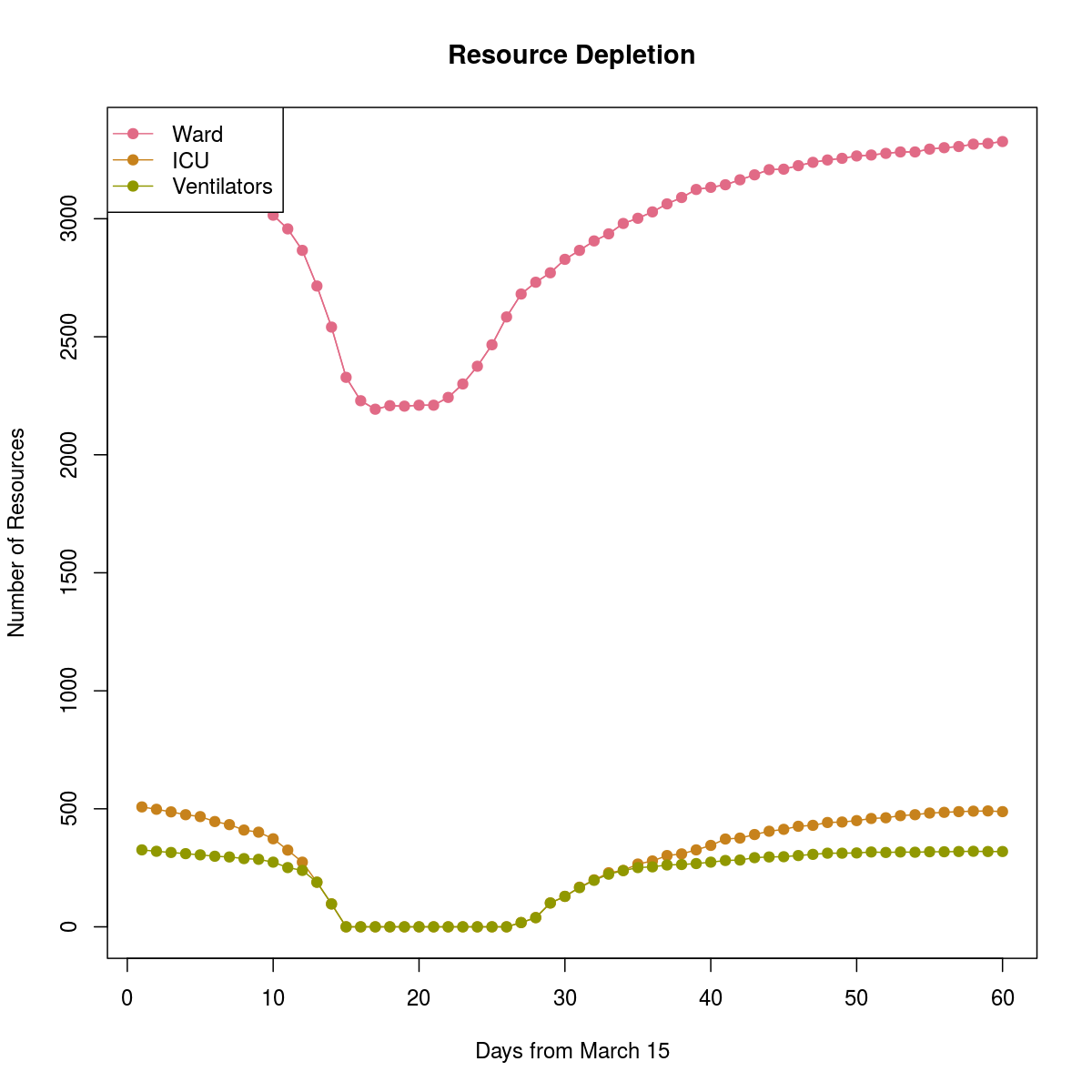
Figure 5 – 25% (Days Until Resource Depletion)
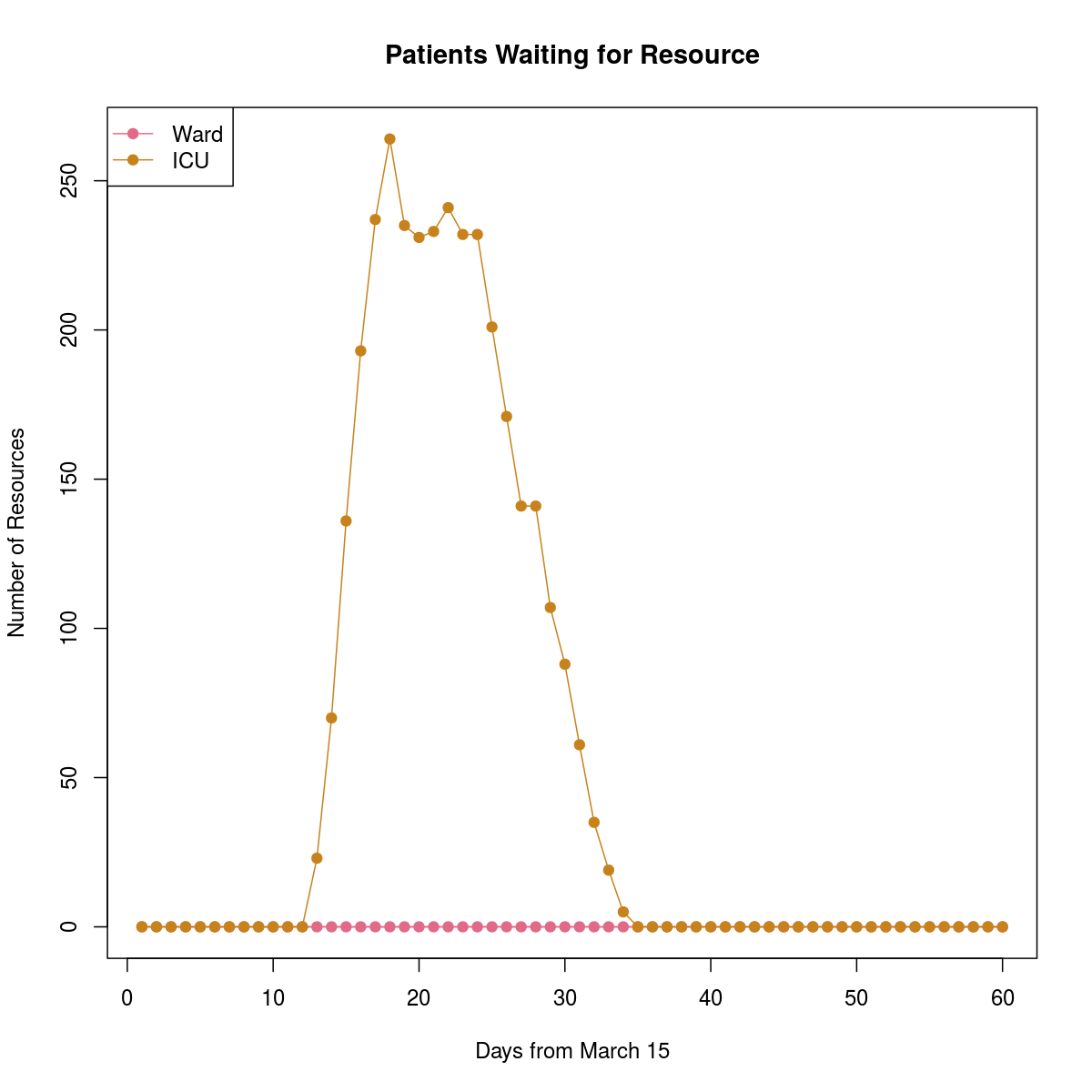
Figure 6 – 25% (Patients Waiting for Resources)

Figure 7 – 15% Scenario (Patients Needing Admission)
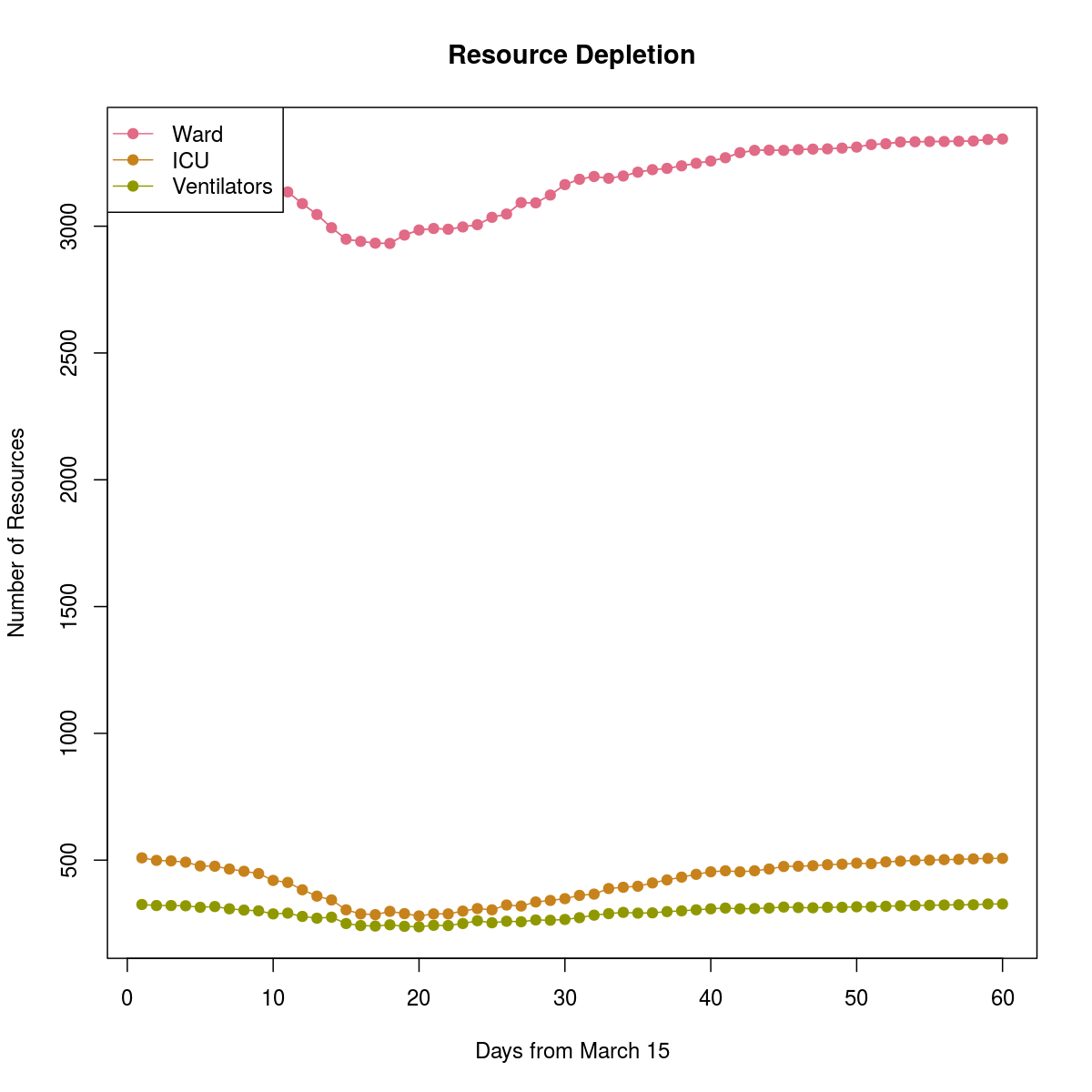
Figure 8 – 15% (Days Until Resource Depletion)
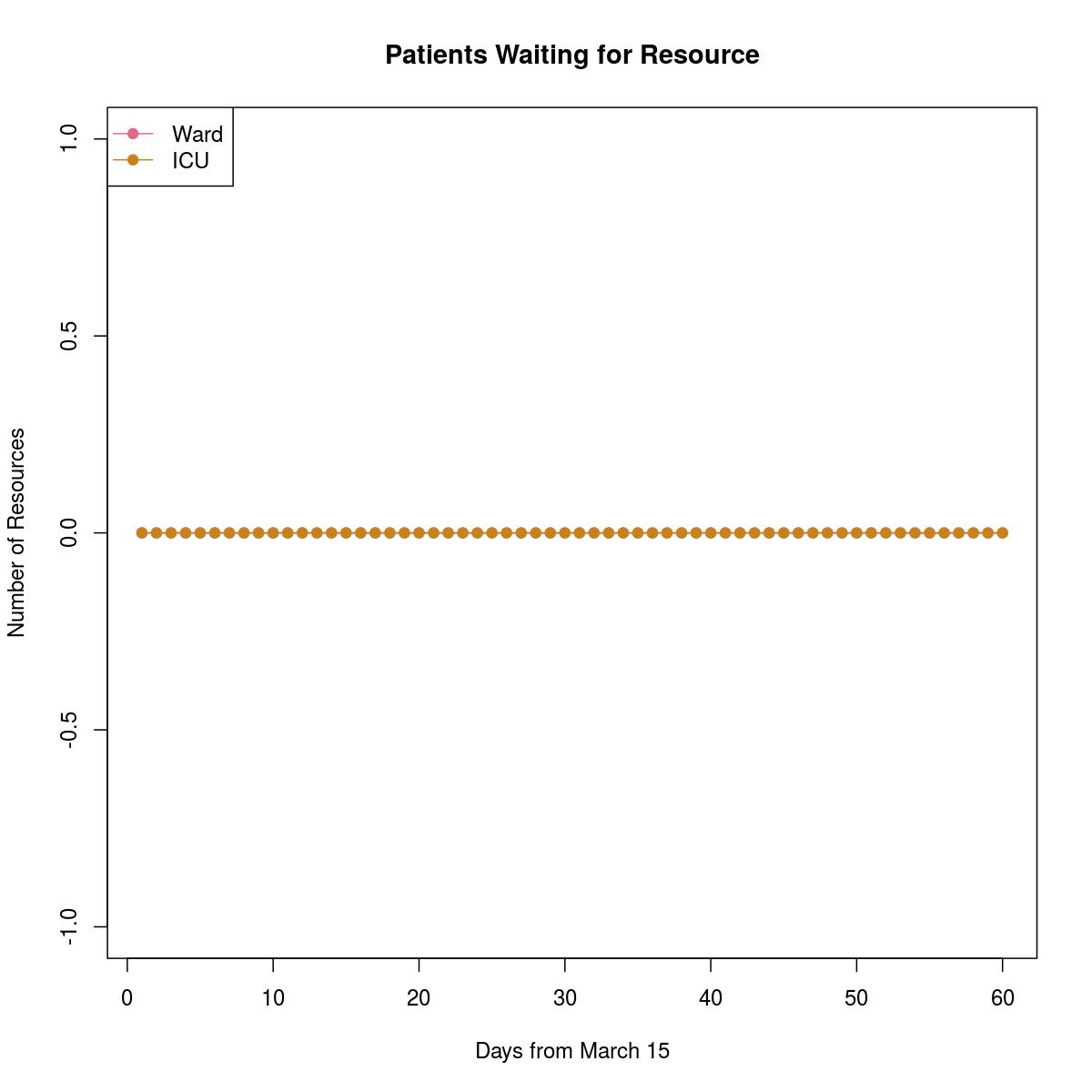
Figure 9 – 15% (Patients Waiting for Resources)
March 21, 2020 – Brief Summary (Updates)
What has changed?
- Italy scenario updated with recent case counts from Italy.
- We have included two new scenarios with a linear increase in new daily cases for 14 days, then the curve flattening to approximate effective social distancing measures.
- With these new scenarios, the limitations/assumptions:
- Social distancing is effective (curve becomes similar to South Korea)
- Social distancing takes 14 days to see impact
- Day 1 in our simulations is around March 15, i.e., we are now at day 7
- Methods are not included in new report, they are unchanged from March 18, 2020 report.
Updated report “Hospital Resource Prediction_Mar 21 UPDATE” here: Downloads
March 18, 2020 – Brief Summary
Methods:
- The analysis is for Ontario.
- The base case analysis assumes we can free up 10% of existing hospital beds and 25% of ICU beds and ventilators for COVID-19 patients – different scenarios forthcoming
- We run a “Conservative Scenario” with a 7.5% daily increase in new case numbers, and a worst-case “Italy Scenario”, i.e., case numbers in ON increase at the same rate as in Italy (this is almost a 33% daily increase in new case numbers, which roughly corresponds to the rate of growth currently seen in many European and North American countries)
Results:
- “Conservative Scenario”: we run out of ICU beds and ventilators in ~ 37 days and ward beds in ~ 7 weeks
- “Italy Scenario”: we run out of ICU beds and ventilators in ~ 16 days and ward beds in ~ 5 weeks
- Scenario analyses that consider the effect of increased capacity for COVID-19 patients within existing resources and the addition of 2053 ICU beds and 600 ventilators demonstrate that the time to resource depletion is longer, but that there may still be a critical shortage of ventilators
- More scenarios forthcoming.
Our new report “Hospital Resource Prediction_Mar 18” here: Downloads
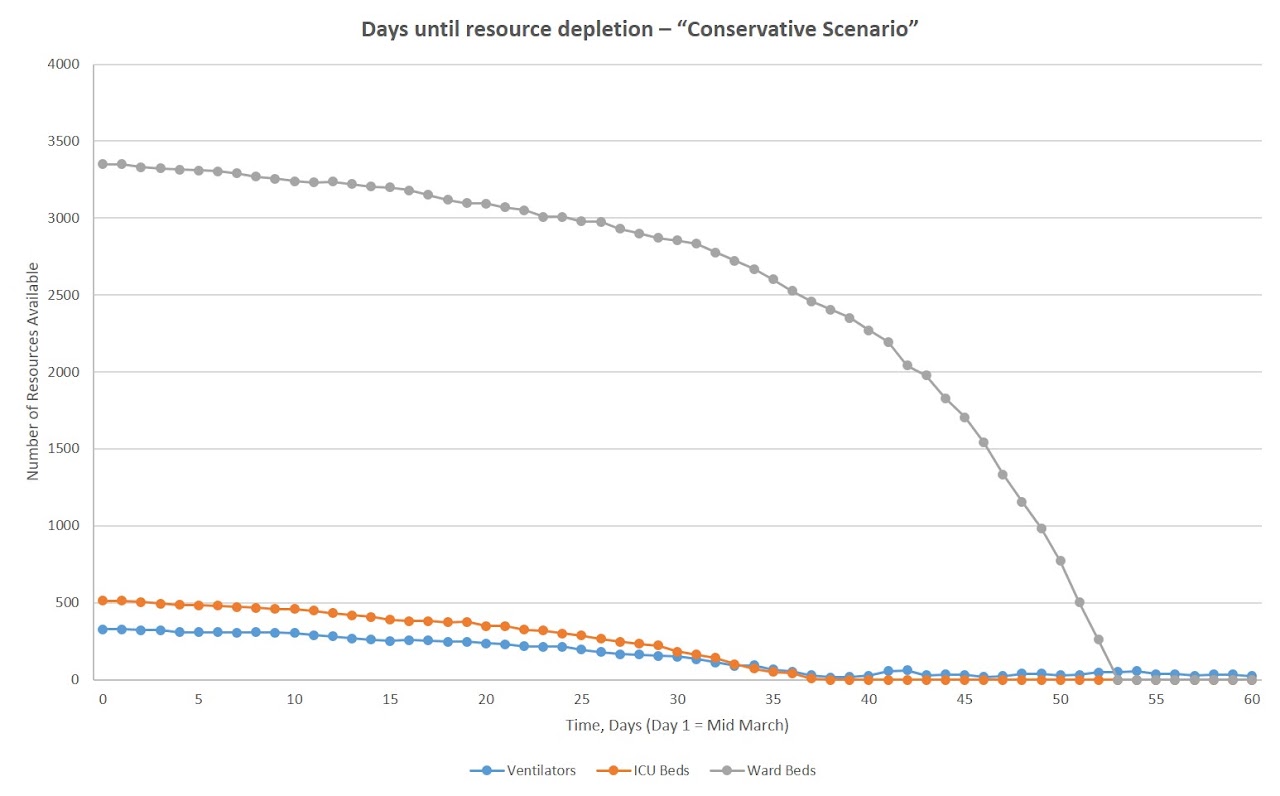
Figure 1. Base-case (Conservative Scenario) of Resources Available over Time

Figure 2. Base-case (Conservative Scenario) of Number of Individuals Waiting for Resources over Time
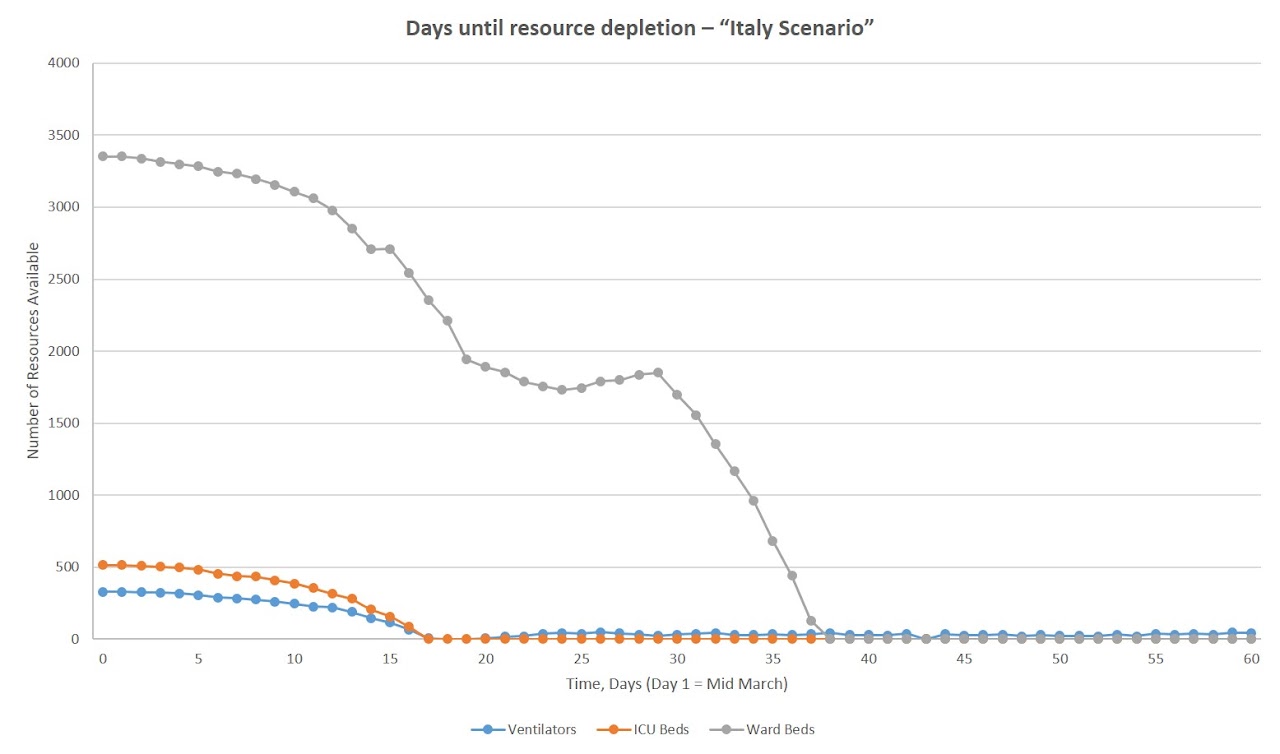
Figure 3. Base-case (Italy Scenario) of Resources Available over Time
